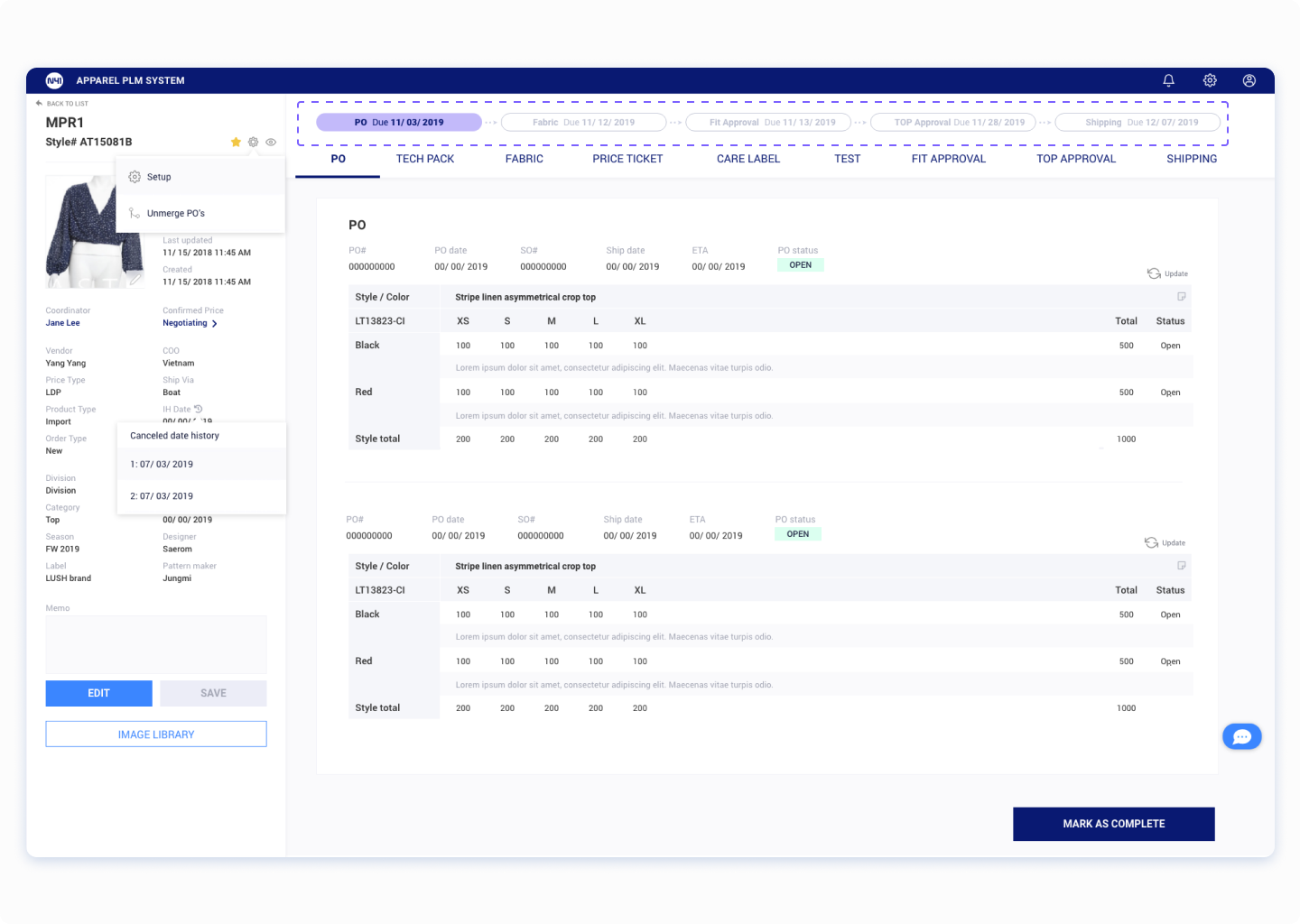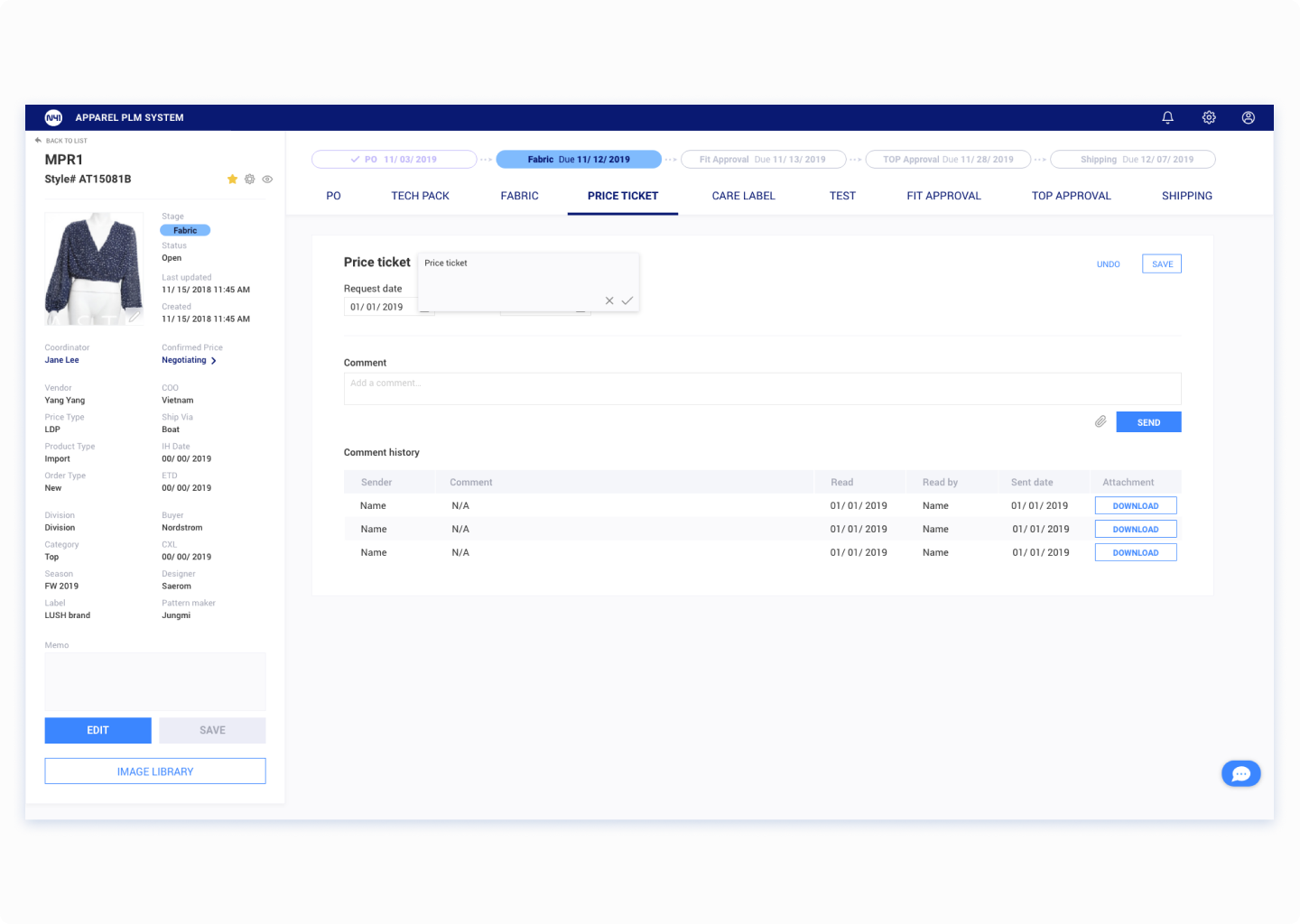04
PLM System
N41
PLM System

Overview
N41’s legacy PLM system was functional but bloated - overwhelming teams with disjointed workflows, duplicated tasks, and unclear hierarchies.
My role was to lead the redesign of a cleaner, more intuitive product lifecycle platform to support the day-to-day work of product developers, merchandisers, and operations teams.
The goal wasn’t flash. It was clarity, confidence, and smoother handoffs across roles.
ROLE
Lead Product Designer
UX / UI / System Logic
Flow mapping, field auditing, high-fidelity mockups
Engineering collaboration & handoff
DURATION
6+ Months
TEAM
1x UX Designer
1x UI Designers
3x Developers
1x Product Managers
DURATION
6+ Months
TEAM
1x UX Designer
1x UI Designers
3x Developers
1x Product Managers
Challenge
- The existing system was dense, outdated, and visually fragmented
- Teams relied on offline tools and manual workarounds
- Developers lacked clarity on which inputs connected where
We had to design a smarter, scalable interface that served multiple teams, supported cross-functional handoffs, and minimized operational stress.
Scope
6 Mo. End to end design, UX design, interaction design, UI design, user testing, handoff.Solution
- Rebuilt the core product creation workflow to support real-world user behavior: item variants, version tracking, component inputs.
-
Streamlined the UI hierarchy to reduce visual fatigue and click depth—emphasizing clarity over control.
-
Grouped critical product info logically: Bill of Materials, pricing, sourcing, and fit specs all surfaced contextually.
-
Created a global overview calendar to help teams track progress and plan ahead across multiple product lines.

- Implement a product tracking system that allows for easy monitoring of each product's current state throughout its lifecycle.

- Develop a global platform that facilitates seamless communication and message exchange between partners and customers. The platform should also provide a history log to prevent miscommunication and document all relevant discussions and decisions.

| Principle | In Practice |
|---|---|
| Less input, more insight | Reduced unnecessary fields, emphasized system-driven context |
| Show only what matters now | Designed a progressive layout with collapsible sections |
| Speak human, not database | Rewrote labels for clarity and team alignment |
| Design for handoff, not just input | Made it easier for different roles to work in sync across the lifecycle |

Results
- Reduced duplicate data entry by 40%
-
Decreased onboarding time for new hires by over 50%
-
Internal teams reported “less confusion and less fatigue” when navigating product setup
- Dev team reported fewer clarification requests and smoother design-to-dev handoff
Reflection
This wasn’t about making something pretty - it was about making something teams could finally trust.
Tools like PLM are rarely glamorous, but when they’re thoughtfully rebuilt, they quietly power everything behind the scenes. I'm proud of how this work reduced friction, restored flow, and helped people focus on their actual work, not the tool.